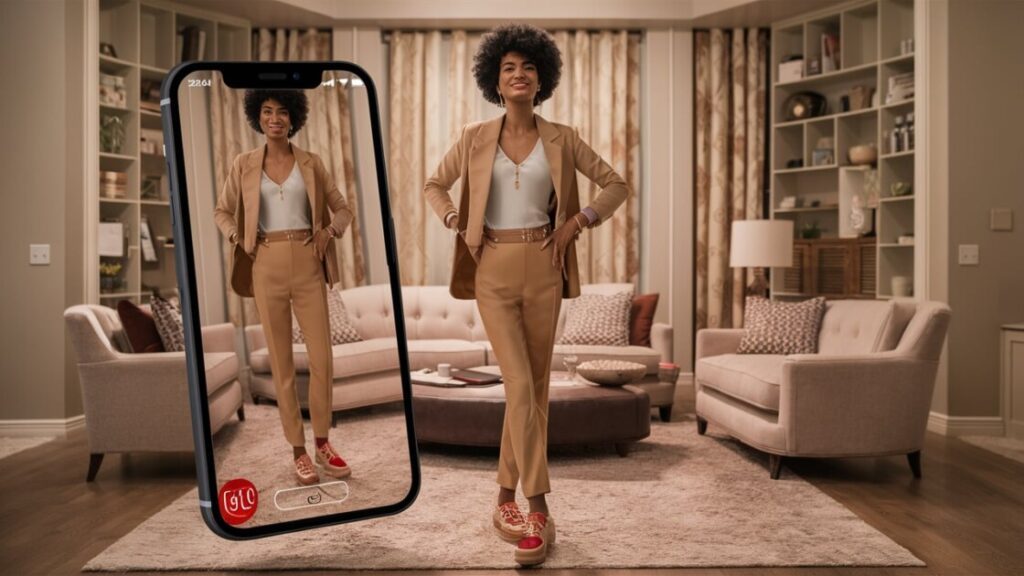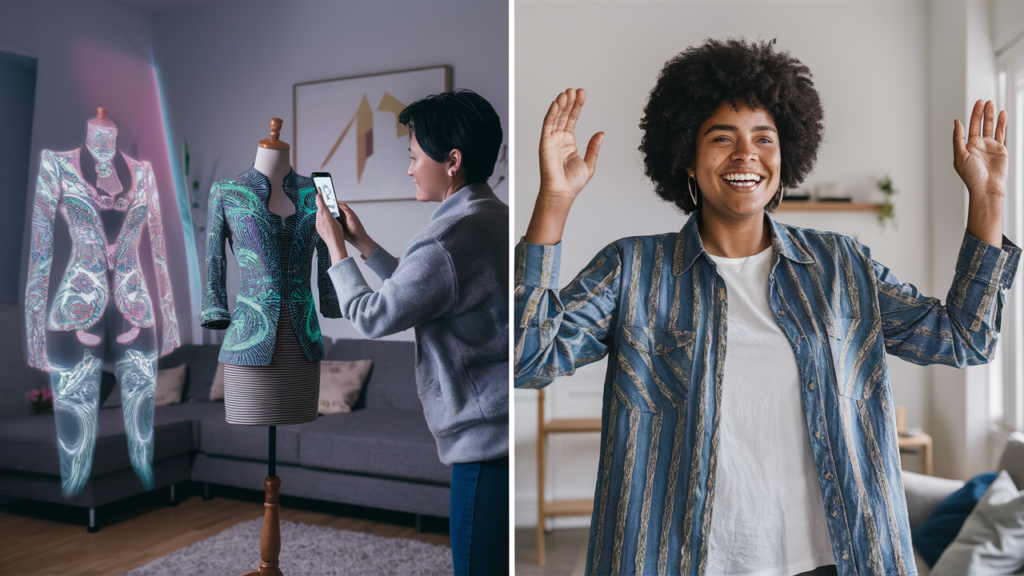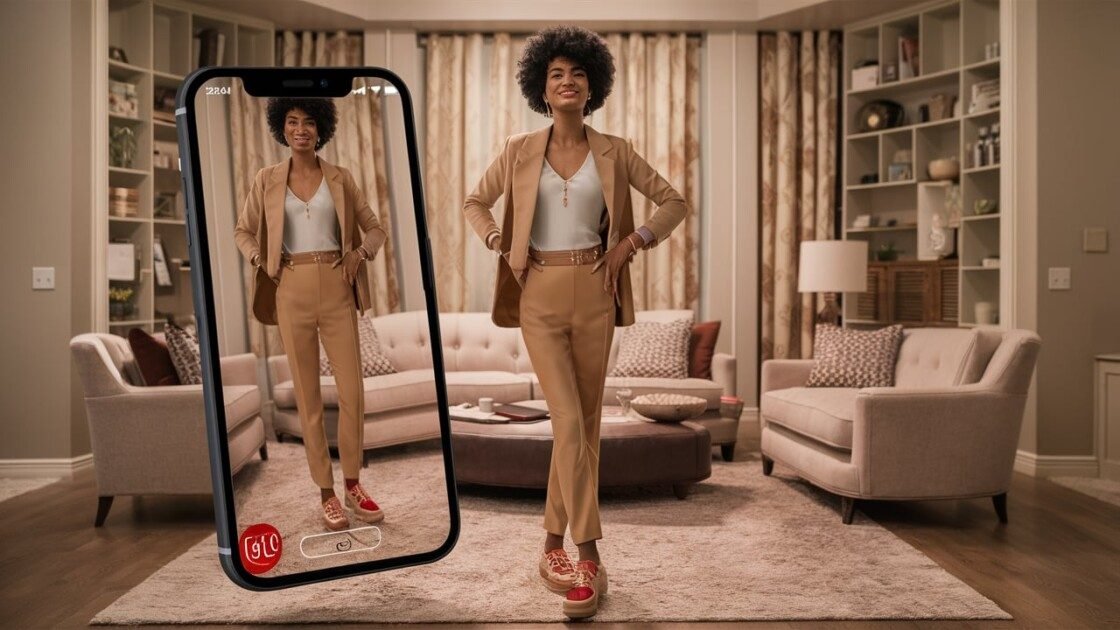In today’s ever-evolving digital world where technological advancements are revolutionizing various industries, including retail. Augmented reality (AR) is at the forefront of this digital transformation that is integrating the real and virtual worlds to deliver immersive and interactive shopping experiences.

In this blog post, we will explore how augmented reality is shaping internet retail experiences and making buying decisions simpler.
Enhanced Product Visualization
One of the biggest features of augmented reality that is shaping the internet retail experiences is enhanced product visualization. Before the AR technology, consumers needed to rely only on static images and product descriptions to make their purchasing decisions. This information could sometimes not be sufficient, leading to a purchase of a product that doesn’t fit the bill.
However, the advent of AR has been a game-changer for the retail industry by an augmented view of how a product would fit into their lives. It allows consumers to try on different clothing virtually, visualize how furniture would fit into their rooms, or even try out makeup to see whether it fits their lifestyle. With the overlaying of digital content capabilities onto the real world, AR significantly helps consumers make well-informed purchase decisions. That maximizes customer satisfaction and less likelihood of a possible return.
Improved Customer Engagement
Augmented reality powered by the best fiber internet connectivity allows retailers to boost customer engagement by delivering more immersive and interactive experiences. AR-powered apps can give a competitive edge to retailers to provide unforgettable customer experiences.

For example, AR technology can allow consumers to try on different clothing, and how a home appliance would look and fit in their kitchen. Not only that but also retailers can use AR to allow sports fans to buy a ticket for the best seat of the stadium, making memorable experiences watching the game. By partnering with a reliable AR development company, retailers can improve customer engagement, and deliver better experiences, leading to boost sales and conversions.
Personalized Shopping Experiences
AR-powered apps also help retailers deliver highly personalized shopping experiences based on customers’ specific preferences and interests. Retailers can utilize the best fiber internet service to leverage data analytics and user profiling to get in-depth information about their customers. They can further leverage that information to provide personalized experiences by recommending products based on their history and interactions.
For example, a beauty store can recommend personalized cosmetic products based on their buying history and their lifestyle preferences. Delivering such a high level of shopping experience leads to better customer engagement, increasing the likelihood of sales and establishing customer loyalty. By harnessing the power of augmented reality and delivering personalized shopping experiences, retailers have the potential to revolutionize the entire retail industry.
Reduced Return Rates
Return rates have always been a pain in the retail industry, consequently impacting on their bottom line. However, retailers can significantly mitigate this issue with the help of augmented reality. They can virtually demonstrate their products to their consumers to make their buying decisions a whole easier. That can help in minimizing the chances of buying mismatched products that would later be needed for returns.
For example, a clothing retailer can demonstrate their clothes to their potential customers based on their size and preferences. In this way, consumers will be more likely to buy the product that fits the bill. That enables the consumers to seamlessly buy their products without ever having second doubts, leading to reduced return rates and more profitability.
Brick-and-Mortar Transformation
eCommerce is making huge progress in the digital era, providing ease and convenience to shoppers across the globe. However, retail still plays a pivotal role in enhancing customer satisfaction.
With the help of AR technology, traditional retailers are also changing the game of their brick-and-mortar stores and thriving in the competitive digital world. Retailers can blend their physical stores with AR elements to make memorable shopping experiences. They can use AR for product demonstrations, recommendations, and information overlays to simplify customer’s buying journey.
Increased Online and Offline Integration
Augmented reality technology makes the customers’ buying journey easier with online and offline integration. Customers can use AR-powered applications to visualize the product online or by physically visiting the brick-and-mortar store. Retailers can leverage this seamless integration across touchpoints to deliver consistent and personalized shopping experiences.

For example, a traditional retailer can use AR technology to demonstrate its home appliance products and whether they fit perfectly in the kitchen of the potential customers. This allows customers to make well-informed buying decisions when they visit the brick-and-mortar stores to make the purchase. In this way, retailers can bridge the gap between online and offline integration and leverage multiple channels to maximize customer engagement and boost sales.
Final Words
Augmented reality is a revolutionary technology that has forever changed how retailers can interact, engage, and deliver exceptional shopping experiences. They can leverage AR to bridge the gap between online and offline integration to demonstrate the product virtually ensure personalized shopping experiences and make the buying decision much simpler. At the speed at which AR is evolving, it will surely pave the way for more innovative applications for hyper-personalized shopping experiences.
FAQs: Unveiling the Impact of AR on Online Shopping
1. What is Augmented Reality (AR) and how does it relate to online shopping?
AR overlays digital content onto the real world. In online shopping, AR apps allow you to virtually experience products before you buy them. Imagine trying on clothes, placing furniture in your living room, or testing makeup shades – all from the comfort of your home!
2. How can AR improve my online shopping experience?
AR can make online shopping more:
Informative: See exactly how a product would look and fit before purchasing, reducing the risk of getting the wrong size or style.
Engaging: Interact with products in a fun and immersive way, making shopping more enjoyable.
Convenient: Try on clothes or visualize furniture placement without leaving your home.
3. What are some examples of AR being used in online shopping?
Virtual try-on apps for clothes, jewelry, and accessories.
AR furniture placement tools to see how furniture would look in your space.
Cosmetic AR apps to virtually try on makeup and experiment with different looks.
4. Does AR eliminate the need for physical stores?
No. While AR offers a convenient way to shop online, physical stores still play a vital role. AR can enhance the in-store experience by offering interactive product demonstrations, information overlays, and virtual try-on options in fitting rooms.
5. Is AR safe to use?
AR apps typically require access to your phone’s camera. It’s important to download apps from reputable sources and be mindful of the permissions you grant.
6. What’s the future of AR in online shopping?
As AR technology evolves, we can expect even more innovative applications. Imagine personalized product recommendations based on your AR interactions, or omnichannel customer support using AR for remote troubleshooting. The possibilities are endless!










